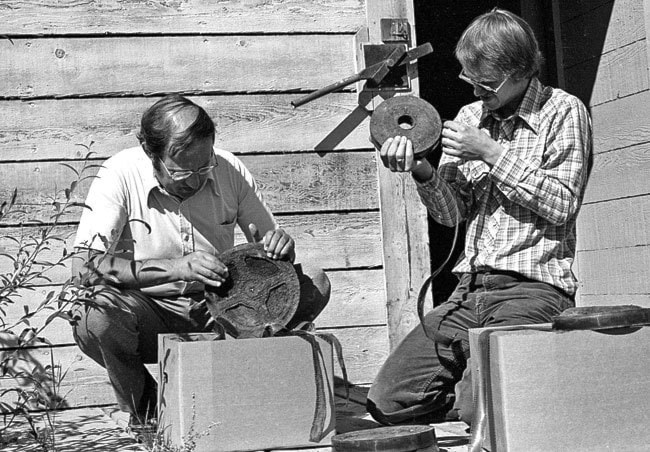What was meant to be a Dawson City dumping ground for broken curling stones and leftover chicken wire ended up preserving a trove of film history for almost 50 years.
The 533 reels preserved in the territory’s permafrost are the focus of a new documentary making its North American debut next month at New York’s Lincoln Centre.
Dawson City: Frozen Time is the brainchild of modern filmmaker Bill Morrison, but its source material dates back more than a century.
In the early 1900s, Klondikers had their choice of three movie theatres. Along with the famous Palace Grand Theatre, there was the Family Theatre run by the Dawson Amateur Athletic Association and the Orpheum Theatre on Front Street.
“They didn’t have television, they didn’t have radio, they didn’t have internet. Movies were the big thing,” said local historian and Yukon News columnist Michael Gates.
“People would watch serial dramas, they would watch comedy, they’d also watch newsreels, and that was their way of keeping in touch with the outside world.”
Dawson was considered the end of the line for Hollywood films. After being viewed in many of the larger urban centres the films would end up in the Klondike and it would be too expensive to ship them back.
But old nitrate film was dangerous. Made from a chemical cousin to nitroglycerin, the reels were highly flammable. Film warehouses had been known to burn to the ground as a result of what they stored inside.
For obvious reasons, storing the films indefinitely in the basement of Dawson’s Carnegie Library was not ideal.
So, in 1929, when the athletic association couldn’t continue running the local swimming pool, the old film reels, along with other trash, were tossed in before the hole was filled.
The spot spent nearly 50 years as a skating rink.
It turns out that the cold, dark, oxygen-free environment of a northern swimming pool-turned-skating rink works well for preserving film.
“That’s what’s really remarkable about this, is that it was an inadvertent preservation project,” Morrison said.
“They thought they were throwing them away in a more ecologically aware way by putting them in what was essentially a landfill pit, the swimming pool.”
In July 1978, Gates was a newly arrived curator for Parks Canada in Dawson City. Construction work had begun on the town’s new recreation centre when crews uncovered the hole and he was called over to investigate.
“I tested a couple pieces of the film, just clipped off a small fragment and lit a match to it. Of course, stuff flared up dramatically so I knew it was nitrate film.”
What they had uncovered was about 100 hours worth of silent film, a snapshot of what the community would have been watching from 1905 to about 1925.
They are the only copies that exist of these films.
At the time, the reels were considered as disposable as newspaper, Morrison said, and many other copies were destroyed by time.
“None of them exist anywhere else, they’re all unique copies.”
Among the highlights uncovered in the old Dawson pool is footage from the 1919 World Series, which was marred by the infamous Black Sox betting scandal.
There are news stories about the Ludlow massacre, when the Colorado National Guard was called in to fire on striking miners.
Gates, along with his soon-to-be wife Kathy Jones-Gates, who was working for the Dawson City Museum, set up shop in an old root cellar. Using hand cranks, the pair wound the films off their rusted cores onto a plastic variety, taking a close look at every cell along the way to try and identify the film.
“We have about a dozen boxes of film reels currently in storage, potential for, but not confirmed, hundreds more still in ground,” he wrote in a Telex message to the National Film, Television, and Sound Archives.
Ottawa was interested.
The films have now been preserved in more reliable acetate and digital forms.
Canada’s national archives have the newsreels, while the U.S. Library of Congress has taken over care for the Hollywood movies.
Morrison said he first heard about the Dawson find while he was in art school in the ’90s, but it wasn’t until about 2014 that he started digging through the restored films.
“They’ve been catalogued and archived and available to anyone who wanted to make a film about them or explore them,” he said.
“Why someone hasn’t done it before now is a mystery to me, but I’m glad they haven’t.”
The documentary, he said, is about the founding of Dawson, the history of the town and the discovery in the pool.
In 1979, a year after the discovery, Ottawa had restored enough of the films to fill two reels.
They were shown at the Palace Grand Theatre to a full house.
“It’s a big gift to the film industry and film archives,” Gates said. “Now they have hundreds of films that film archives thought were lost forever.”
Contact Ashley Joannou at ashleyj@yukon-news.com
